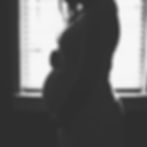Prefer Video? CLICK HERE

It’s no secret that as a society we are having children at much older ages than we did in the past. Whether we are choosing to delay pregnancy until career goals are accomplished or we are still searching for the perfect partner, the average age of first time moms in the US has risen to almost 30 years old. There are lots of benefits to delaying pregnancy, such as financial and relationship security, but what about its effect on the health of mom and baby? Once a woman reaches 35, she is categorized as being advanced maternal age (AMA). It’s a scary term, but what does it truly mean for a pregnancy? I wanted to provide a few facts on the risks associated with pregnancy after 35; not to incite fear but to fully educate and enhance informed decision making. I’m also going to discuss what you can do to prepare for this next phase in your life. For the record, numerous women bear healthy children after 35 and even well into their late 40s. The risks I’m going to discuss are generalized based on statistics, but in no way guarantees what your individual experience will be.
Advanced Maternal Age
So what exactly does it mean to be advanced maternal age? It means that you are over the age of 35 and considered high risk due to the statistical increase in complications associated with pregnancy. Research has found that at this age, certain conditions are more likely than if you were pregnant at a younger age.

Risks
So, remember, a risk factor does not guarantee a complication will occur; it only means that your risk for it has increased. So what risks are associated with being over 35 and pregnant?
Decreased egg quality - we do not regenerate new eggs throughout our lifespan. Instead, we are born with a certain number of eggs that naturally decrease in quantity and quality each year. Women who are under 30 have a higher percentage of conceiving naturally than women who are 40 due to these decreases. So, the older you are, the more difficult it becomes to conceive naturally, which can lead to infertility and need for assisted reproductive technologies. This is why some women will consider freezing their eggs to preserve the quality until they are used at a later date.
Multiples - the chance of twins or multiples increases with age, and if you require the use of fertility treatments, this can increase it as well. Although the sound of twins sounds cute, it makes the pregnancy high risk and can lead to a multitude of risks. Many multiple gestation pregnancies do not make it to full term.
Diabetes - In general, we are more at risk for diabetes as we age. If you develop pre-existing diabetes before pregnancy, this can make the pregnancy even more high risk. Additionally, women over 35 have been associated with a higher risk of developing gestational diabetes, which occurs during the pregnancy.
High blood pressure - The same way we are more at risk for diabetes with increasing age, we are also more at risk for high blood pressure. This can be present before pregnancy or during pregnancy and even be associated with preeclampsia, which poses a great risk to mom and baby.
Premature birth and low birthweight - this is associated with increasing age and a multiple gestation pregnancy, as mentioned above. These babies usually have to spend time in the neonatal intensive care unit after birth and may experience health issues later in life.
Pregnancy loss - aging increases the risk of miscarriage or stillbirth, probably due to the decrease in egg quality and other associated risks, such as the ones mentioned above.
Birth defects - pregnancy over 35 does significantly increase the risk for chromosomal abnormalities, such as Down syndrome.

Tips for Healthy Pregnancy
Although these risks sound scary, there are steps you can take to increase your chances of a healthy pregnancy. Again, many women in their 30s, 40s, and even 50s give birth to thriving children.
Preconception visit - this is where you can discuss your desire for pregnancy with you health care provider and identify any pre-existing conditions that can be managed before conceiving
Daily prenatal vitamin with folic acid - this ensures that your body receives all the nutrients necessary to encourage normal development of the fetus
Lifestyle changes - decreasing sugar intake, consuming more vegetables, and exercising regularly can help to decrease the risk and manage diabetes and high blood pressure
Regular prenatal visits - it’s important to keep all of your regular prenatal appointments to ensure you and the baby are doing well
Maternal fetal medicine - your provider will probably refer you to a high risk OB doctor, known as MFM. They will keep a closer eye on your pregnancy and baby and alert your provider if something looks concerning.
Genetic testing - this is recommended for anyone over 35 and insurance will usually cover these tests if you are in this age range. A simple blood test can now help to identify genetic conditions, such as Down syndrome.
Avoid alcohol, smoking, and drug use as these will only further increase the risks discussed above.

We live in a day and age where modern medicine has advanced to the point where we can properly manage high risk pregnancies. Remember, this term just identifies risk factors so that you and your baby can receive the best possible care. It in no way determines your ability to conceive and give birth to a healthy baby. I hope this resource provides more information and awareness and helps you to determine the best plan for your individual goals.
xoxo, Global Midwife
Disclaimer: This is not medical advice, only education. Always check with your healthcare provider.